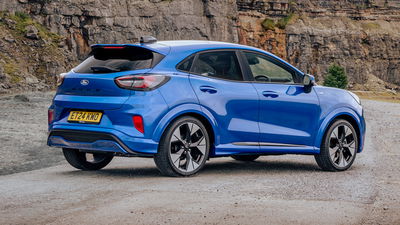Remembering What The Dodge Hornet Could Have Been Has Made Us Sad

Remember that time Dodge – a company with an entire image that, until recently, was tbuilt around thrusting muscle cars with snorting Hemi V8s – built a small box with the engine from a Mini Cooper S? Probably not because it was just a concept car – the 2006 Dodge Hornet.
Yep, in the heady pre-financial crash days of the 2000s, the American big three trotted out all manner of odd concept cars, and this was one of a deluge from Dodge. At its heart was the supercharged version of the Tritec engine, a four-cylinder co-developed in the late ’90s by Chrysler and Rover of all companies, before the perma-cash-strapped latter was dissolved by parent company BMW, which kept its stake in the Tritec project.

Reviving an old name from the AMC stable (Chrysler had acquired and discontinued the brand a decade and a half prior), the Hornet concept made its debut at the Geneva Motor Show. Funnily enough, a few stands over Mini was showcasing a concept that previewed the incoming Clubman and the second-generation Mini hatch as a whole.
Unlike the Mini, the Hornet had no time for retro shenanigans. It had tight, boxy proportions with small overhangs and discreet door handles giving the five-door hatch a sporty three-door look. Sizeable, flared wheel arches housed 19-inch wheels, which even now would be considered massive for a car of this size. Speaking of, although it was intended for the ‘supermini’ B-segment, it was getting on for C-segment width, with the aim of providing as much room inside as possible.

The rear doors opened in a backwards-hinged ‘suicide’ fashion, revealing a conspicuous lack of B-pillars and an airy cabin with a flat floor coated in a tough, honeycomb-textured rubber mat. The front seats were made as thin as possible without adversely affecting comfort, further increasing room for whoever might be in the back.
This was supposed to be a car that appealed to buyers on both sides of the Atlantic. “We set out to create a vehicle with a uniquely American character to expand the image and presence of the Dodge brand in Europe and international markets, especially in the entry-level market,” exterior designer Mark Moushegian said.

It was certainly very European in its mechanical makeup, with a transversely-mounted inline-four powering the front wheels exclusively. And yes, that engine was a supercharged Tritec/Pentagon 1.6 (a ‘T16b4’ for you engine code geeks out there), providing 170bhp and a 0-60mph time of 6.7 seconds. Like the R53 Cooper S it shared the engine with, the Hornet had a functional bonnet scoop to provide the intercooler with an abundant supply of fresh air.
At the time, the official line was: “It’s purely a concept, but it shows you what the Dodge brand means in terms of future products”. A couple of years on, however, a production version seemed likely. “We are working intensely on the Hornet study and I think we will announce something on this in the future,” Chrysler international purchasing VP Thomas Hausch said in 2008.

The same year, a report emerged suggesting Chrysler was to team up with Nissan to make the Hornet in Oppama, Japan using Versa underpinnings. There was just one problem: money. The financial woes that saw Chrysler back away from Tritec rumbled on through the ensuing years, compounded by the Great Recession and the demise of DaimlerChrysler. The historic American brand could no longer expect to be propped up by a financially healthier partner. In April 2009, Chrysler filed for Chapter 11 bankruptcy.
In the ensuing years, the ailing Chrysler group would merge with Fiat (which, in an ironic twist, had bought the rights to the Tritec engine in 2008), and rumours of the Hornet’s name being revived continued to swirl. At one point, a car based on the underpinnings of the Alfa Romeo MiTo and Fiat Grande Punto was floated (more irony: that platform had originally been co-developed with Chrysler’s long-time rivals, General Motors, and underpinned the third-gen Vauxhall Corsa), but that project would eventually morph into the Dodge Dart, an underwhelming and short-lived saloon based on the Alfa Romeo Giulietta.

That still wasn’t the end, though. In 2022, some 16 years after the Hornet concept debuted, the name would finally appear on a Dodge production car. So, was it the characterful, funky supercharged box we’d been promised all those years ago? No. It was – inevitably – a crossover; an Alfa Romeo Tonale with a new face. What a buzz kill.















Comments
When I think no B pillar I think of the Daihatsu Tanto